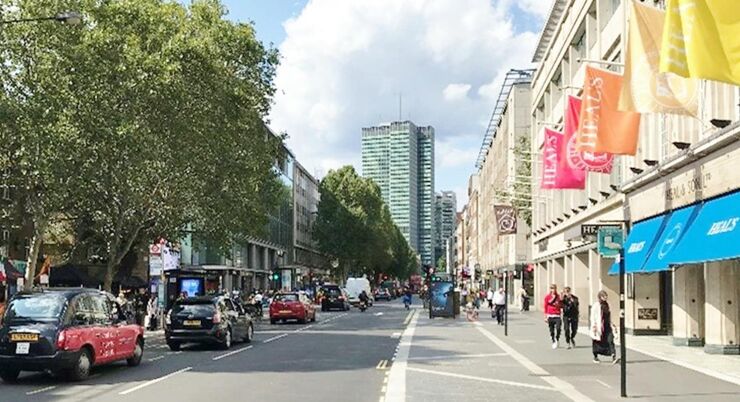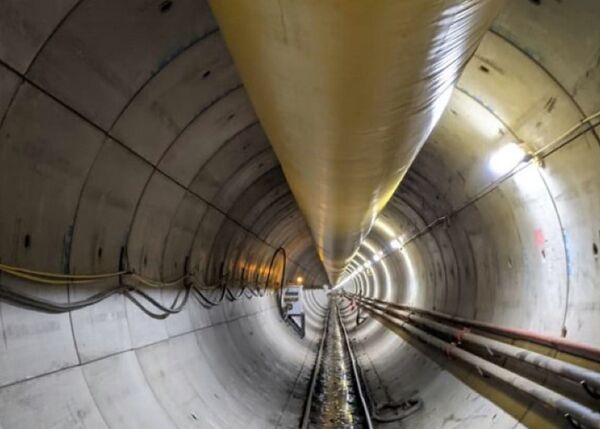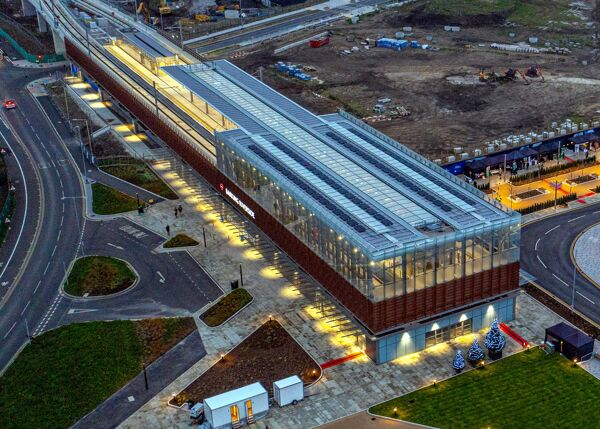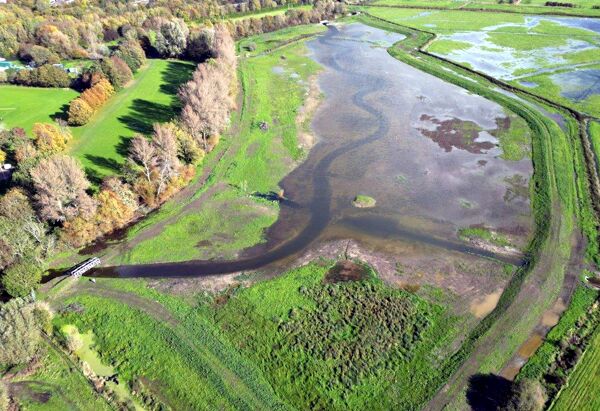
By Simon Fullalove
NEC has been used to procure a £35 million surface transport and public domain transformation scheme in the West End district of London, UK. The project was runner-up in the 2021 NEC Transport Project of the Year.
The London Borough of Camden let the main highways element to contractor Eurovia Infrastructure Limited under an NEC3 Engineering and Construction Contract (ECC) Option B (priced contract with bill of quantities) in March 2018. Norman Rourke Pryme was appointed as NEC project manager and supervisor.
The 1.5 km long scheme involved changing the former one-way streets of Tottenham Court Road and Gower Street / Bloomsbury Street to two-way traffic (restricted on Tottenham Court Road to buses and cyclists between 8 am and 7 pm on weekdays), which has reduced congestion, air pollution and bus delays. It included new and safer provisions for cyclists and pedestrians, with partially segregated cycle lanes, wider pavements, less street clutter and new pedestrian crossings, as well as new and regenerated green spaces.
The main highways work was completed on time and budget in February 2021, despite restrictions caused by the Covid-19 pandemic. The remaining public-realm works are due for completion by the end of 2021 and are being carried out under separate NEC4 ECC contracts using Option A (priced contract with activity schedule).
Close collaboration
According to Camden Council major projects programme manager Kevin Stears, ‘The West End project is an outstanding example of how the NEC obligation to act in a “spirit of mutual trust and co-operation” led to close collaboration between all parties. This fostered a highly trusting relationship which facilitated solutions to overcome some very challenging circumstances, particularly during the pandemic.’
He says the project’s NEC-inspired collaborative culture started from the outset with a two-day inception workshop attended by the client, contractor, project manager and Transport for London (TfL), whose buses and rail works were directly affected. ‘The workshop set out the key risks, project constraints and project expectations in detail to ensure the works could be adequately planned, programmed and managed.’
Stears says there were multiple interfaces, unforeseen conditions and third-party issues which could have delayed the project without careful management. ‘For example, successful delivery required close communication and coordination with TfL for traffic management and phasing at the 27 signalised junctions being installed or upgraded as part of the project.’
Programming and managing a significant number of service diversions across 10 different utility providers within the project area was also needed, along with maintaining communication channels with local residents, business improvement districts, businesses, hospitals, universities and many other key stakeholders.
It was vital too to programme and coordinate works with other major projects in the area. These included Crossrail at Tottenham Court Road station, High Speed 2 at Euston station, Westminster Council’s Oxford Street district, the new University College London Hospitals’ cancer treatment centre and expansions to the Shaftesbury Theatre.
Early warnings
NEC early warning and risk-reduction meetings were held every two weeks to identify and mitigate any risks that could delay the project. ‘Excellent communication was vital to deliver a project of this scale and complexity in the heart of one of the one of the busiest cities in the world,’ says Stears. ‘In addition to the early warning meetings, we held fortnightly construction meetings to review progress and key actions; fortnightly coordination meetings with TfL, Westminster Council and the wider Camden team; fortnightly commercial meetings to agree commercial items upfront; and daily site walkovers involving all parties to resolve issues on site.’
He says a total of around 900 compensation events were notified and agreed quickly and fairly in line with NEC processes, helping to ensure the project remained on track. ‘Despite the unprecedent challenges brought by the Covid-19 pandemic, the project was able to deliver the key milestone of the full removal of the one-way gyratory and completed cycle infrastructure in February 2021 within budget and on programme.’
Benefits of using NEC
- NEC obligation to act in a ‘spirt of mutual trust and co-operation’ led to close collaboration between all parties.
- NEC fostered a highly trusting relationship that facilitated solutions to overcome very challenging circumstances, particularly during the pandemic.’
- Fortnightly NEC early warning and risk-reduction meetings ensured all risks to the project were identified and mitigated at the earliest opportunity.
- NEC compensation event process meant that changes to scope were dealt with quickly and fairly, helping to keep the project on track.



